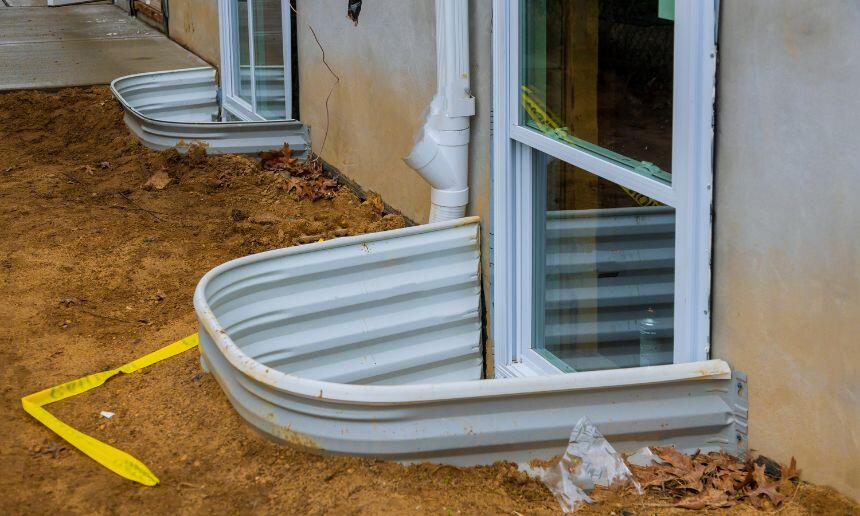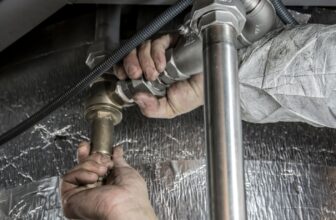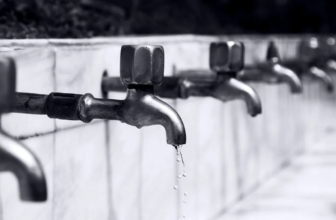Window Well Without Drain – Is it Possible?
As they’re below ground level, basements are typically dark, moist, and musty places.
The easiest way to change this and make this part of the house more tolerable and livable is to install windows and window wells.
Basement windows and window wells are important as they allow natural light to enter the basement, provide ventilation and circulation for fresh air, and act as an escape route in case of emergency.
However, basement windows also pose a flood risk.
They basically breach the foundation wall and if the window well gets flooded, it’s very likely that the water will get to the basement.
Therefore, when installing a window well, you should have some sort of system in place that would redirect the rain or snow water away from the basement.
Below, I’ll explain whether you can have a window well without a drain and still keep your basement safe and dry.
So, let’s dive in!
Table of Contents
Can I Install a Window Well Without a Drain?
While you can install a window well without a drain, it’s certainly not recommended to do so.
In some cases, you may be able to get away with it but will still have to find a way to get rid of excess water from the window well.
If you don’t have a drain tile at the foundation level that you can connect the window well drain to, you can try using a sump pump to plumb the water away from the house or use the window well cover to prevent the water from going in.
Still, the window well drain remains the most efficient solution for flood prevention.
Any excess water entering the window well will be drained away through the installed drainage system and directed away from your home.
This prevents any water buildup in the window well and eliminates the risk of leakage to the basement and walls.
How Do You Drain Water from a Window Well?

Improper window well drainage can cause a number of issues with the potential damage from flooding the basement being the biggest.
Repairing this type of damage requires a lot of work and is typically very costly.
So, you should do everything you can to keep the water out of the window well and reduce the flood risk.
Here’s a short overview of how you can improve your window well drainage and avoid flooding.
Grading
For proper drainage, the ground should slope away from the house foundation and window wells. This provides conditions for the water to flow in the direction away from your house.
If you have enough of a downward slope around your home, you likely won’t have to do anything and just let the natural slope do its thing.
Otherwise, you’ll likely need to have the area around the house regraded.
When grading is done right, there’s significantly less risk of water building up in the window well and damaging the foundation and basement.
Installing Window Well Drainage
Good drainage of the window well will be the key to keeping the foundation and the basement of your house dry, especially if you live in an area with a wet and rainy climate.
The central drain of the window well will typically be connected to either the interior or exterior drain tile system, although, in some cases, it can be tied to the line running to a stormwater drain.
While installing the window well itself is rather simple, establishing the drainage system can hardly be done by someone with no experience.
The drain installation process requires more effort and knowledge, so it’s a job best left to the professionals.
Putting Rocks or Gravel in the Window Well
One of the ways to further improve drainage in your window well is to place a few inches of gravel or a layer of relatively small rocks at its bottom.
By doing this, you will make the water inside the window well gradually trickle into the drainage system instead of pooling around and soaking the soil around the foundation of your house and window well.
Another benefit of the gravel or rock layer is that it prevents the larger pieces of debris from reaching the drain and the weeping tile making it less likely to clog.
There’s no set amount of gravel that is guaranteed to provide the best results.
Different window wells will require layers of different thickness, but, typically, about 6 inches of gravel should do the job.
Pouring too much gravel into the well can increase the pressure on the window and cause it to crack.
Investing in Windows Well Cover
A great way to reduce the chances of clogging the window well drains, as well as reducing the amount of water that gets inside, is to install a window well cover.
Besides keeping the debris out of the window well, a quality cover will also deter smaller animals from going into the well and prevent weed growth.
As these covers are transparent, they won’t reduce the amount of light in your basement.
Regular Window Well Maintenance
Even with all the precautions, a certain amount of small debris, leaves, and garbage will make its way inside the window well.
These can easily clog the drainage system, making it impossible for water to drain away.
That’s why you should regularly clean your drains and remove any debris you find inside the window well.
Conclusion
Window wells are a very convenient and efficient way to provide your basement with natural light and, at the same time, keep it dry and reduce the flood risk.
However, for a window well to perform its role properly, it’s necessary to install a good drainage system.
It will keep the window well working well, drain away all the excess water from the environment, and prevent flood damage.
A flooded window well can cause significant issues not only in your basement but in the foundation of the entire house.
Once you add a drain to your window well, make sure to maintain and clean it regularly, as it won’t be very effective if it gets clogged with debris, leaves, sand, or mud.



















































































